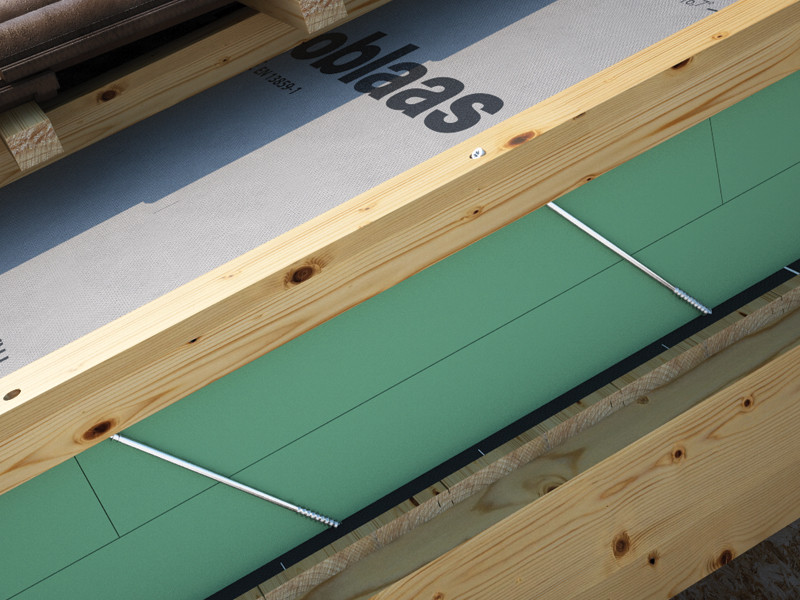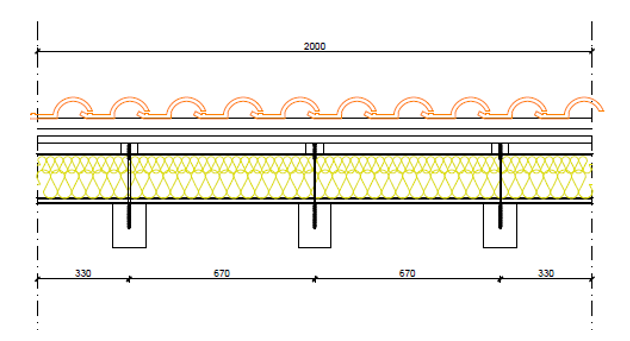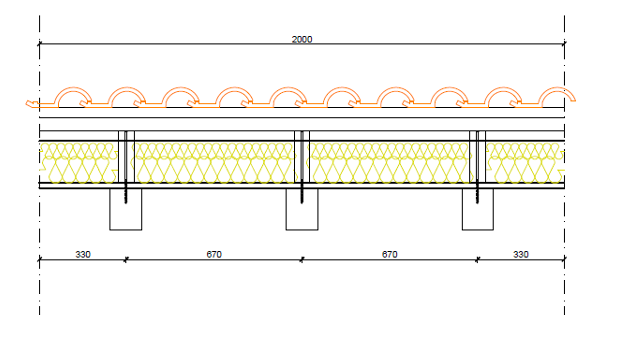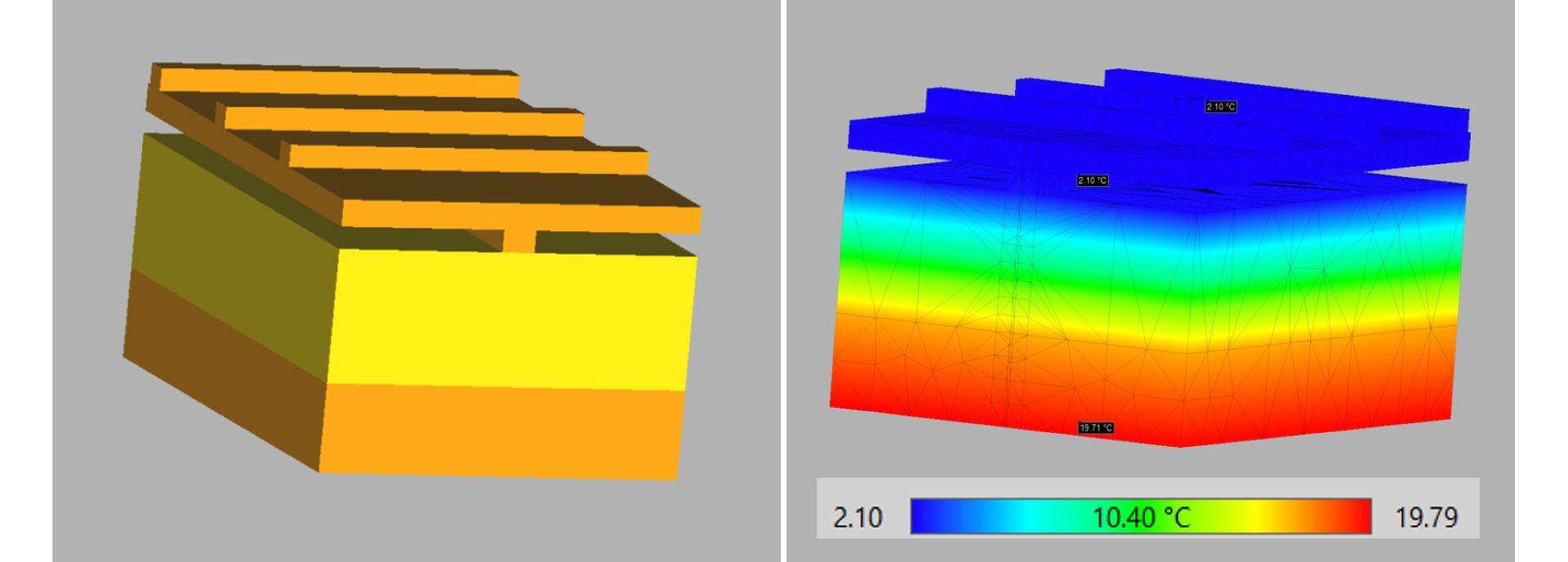DGZ screws for continuous connection of the insulation layer testing activity
- Home
- Success Stories
- DGZ screws for continuous connection of the insulation layer testing activity


Multifunctional, multilayer façade systems
This test concerns: roof, walls and facades
Construction segment: Joints and connectors
Test category: Thermal
An important feature the PM&VL2 will offer is the coupling of testing and modelling activity, hence exploiting the tests in order to calibrate models and broadening the analyses.
Main author:
Marco Larcher
EURAC Research
3D thermal simulations of the roof structure with the screw are carried out in accordance with the standard UNI EN ISO 10211:2018 with the software “Mold 3D 5 Dynamic”. The simulations are performed varying many parameters, including type of roof substructure, insulation thermal conductivity and insulation thickness.
Roof construction with DGZ screws (above) and partially threaded screws (below)


1. The thermal bridge effect is consistently smaller when using DGZ screws compared to partially threaded screws. The reduction in thermal transmittance of the roof when using DGZ screws, as opposed to partially threaded screws, is noticeable.
2. The difference between the two roof structures using the two types of screws is more visible for the cases with timber beams than for the cases with CLT.
3. Increasing the thickness of insulation, the effect of the thermal bridge decreases.
4. The additional insulation thickness required to compensate the increased thermal transmittance caused by partially threaded screws, compared to DGZ screws, is estimated to be little but relevant.
Example of 3D thermal bridge simulation: geometry (on the left) and temperature trends (on the right)

Calculations have shown an advantage in using DGZ screws instead of partially threaded timber batten screws because the insulation is not interrupted. This advantage, in terms of thermal transmittance (U-value), is seen more for structures with timber beams than for CLT. In addition, the advantage is greater for fewer centimetres of insulation, again in terms of thermal transmittance of the whole package. The U-value advantage is also greater for higher-performance insulation (lower thermal conductivity).